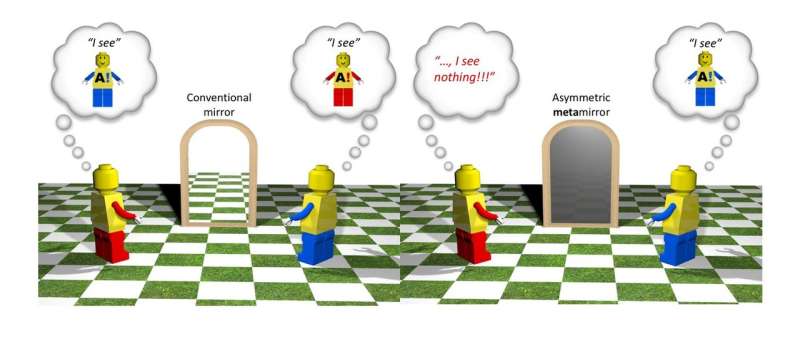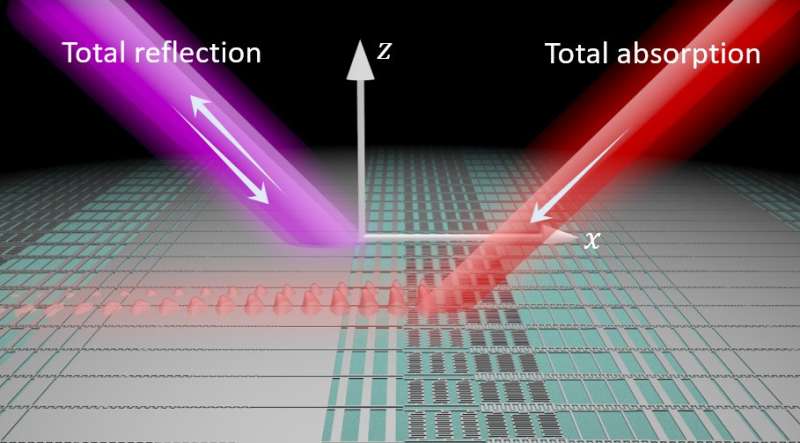New metasurfaces look bright in one direction, while dark in the opposite direction

Researchers at Aalto University have developed metasurfaces with extreme angle-asymmetric response. The surface reflections depend on the angle at which light hits it.
When we look at a mirror from an angle, we see a reversed image. This is because the scattering light of the object is reflected by the mirror and then perceived by observers' eyes. This process, known as specular reflection, is angle-symmetric. Conventional mirrors always have symmetric responses for light coming from both sides of the mirror. Recently, researchers at Aalto University have successfully broken the angle-symmetric response of a mirror using the concept of gradient metasurfaces. The artificially synthesized surfaces can be designed to look bright in one direction, while dark for the observer in the opposite direction.
Metasurfaces are planar artificial materials composed of periodic arranged meta-atoms at subwavelength scale. Meta-atoms are made of traditional materials, but if they are placed in a repeating pattern, the array can show many unusual effects not realized by natural materials. In their article, "Extreme Asymmetry in Metasurfaces via Evanescent Fields Engineering:Angular-Asymmetric Absorption," published in Physical Review Letters, the team from Aalto used gradient metasurfaces to engineer the contrast ratio of brightness for waves coming from two oppositely tilted angles.
"Our findings provide the first demonstration that a flat surface can realize extreme optical asymmetry in angle spectrum. This is an important milestone in both physics and engineering communities," says Xuchen Wang, who is currently a third-year doctoral student in Aalto University. Xuchen studies electromagnetic metasurfaces under the supervision of Prof. Sergei Tretyakov.

More information: Xuchen Wang et al. Extreme Asymmetry in Metasurfaces via Evanescent Fields Engineering: Angular-Asymmetric Absorption, Physical Review Letters (2018). DOI: 10.1103/PhysRevLett.121.256802
Journal information: Physical Review Letters
Provided by Aalto University





















